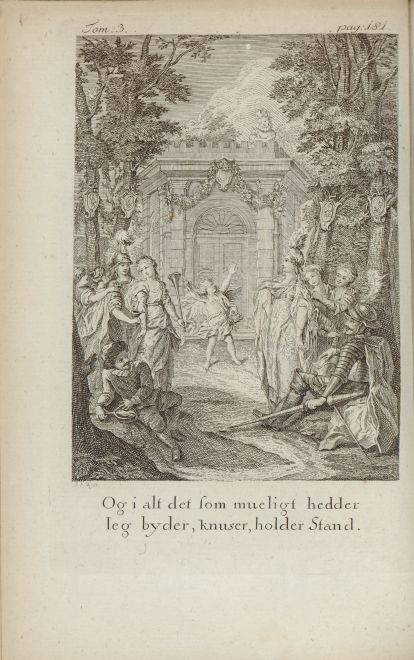
click to enlarge
In the well-balanced composition, the center is Cupid, dancing in front of a castle where a Virgin is protected.
On the left, as part of Cupid's retinue, Poetry (with Fame's trumpet), Prudence (as a prudent virgin with a small lamp), Nobility/Valor (with a crown) and Wisdom (Athena). Wisdom does not appear in Cervantes' original text, but she does in the French translations (Sagesse).
On the right, Wealth's retinue: Liberality (with the "cornucopia" and a pair of compasses) and Largesse.
They should also appear Treasure and Quiet Possession, but they have not been represented.
The first retinue refers to Basilio, the second one to Camacho.
Sancho only eats while don Quixote observes this performance.
Drawing and engraving are of good quality; Preisler is a better engraver than Haas.
2 - In Cushing's copy, tomes III and IV are bound together (volume II).
Johann Georg Preisler or Preissler (Copenhagen, 1757 - Copenhagen, 1831): Designer and engraver. He was son and disciple of the burin engraver Johann Martin Preisler (1715 – 1794). Georg Preisler worked at the Academy of Copenhagen and, in 1780, he won a golden medal. In 1781, he traveled to Paris to be instructed by Jean George Will. In 1787, he was named a member of the Royal Academy of Paris and, one year later, he returned to Denmark, where he was nominated for the Academy of Copenhagen. Talented engraver (Benezit VIII, 478).